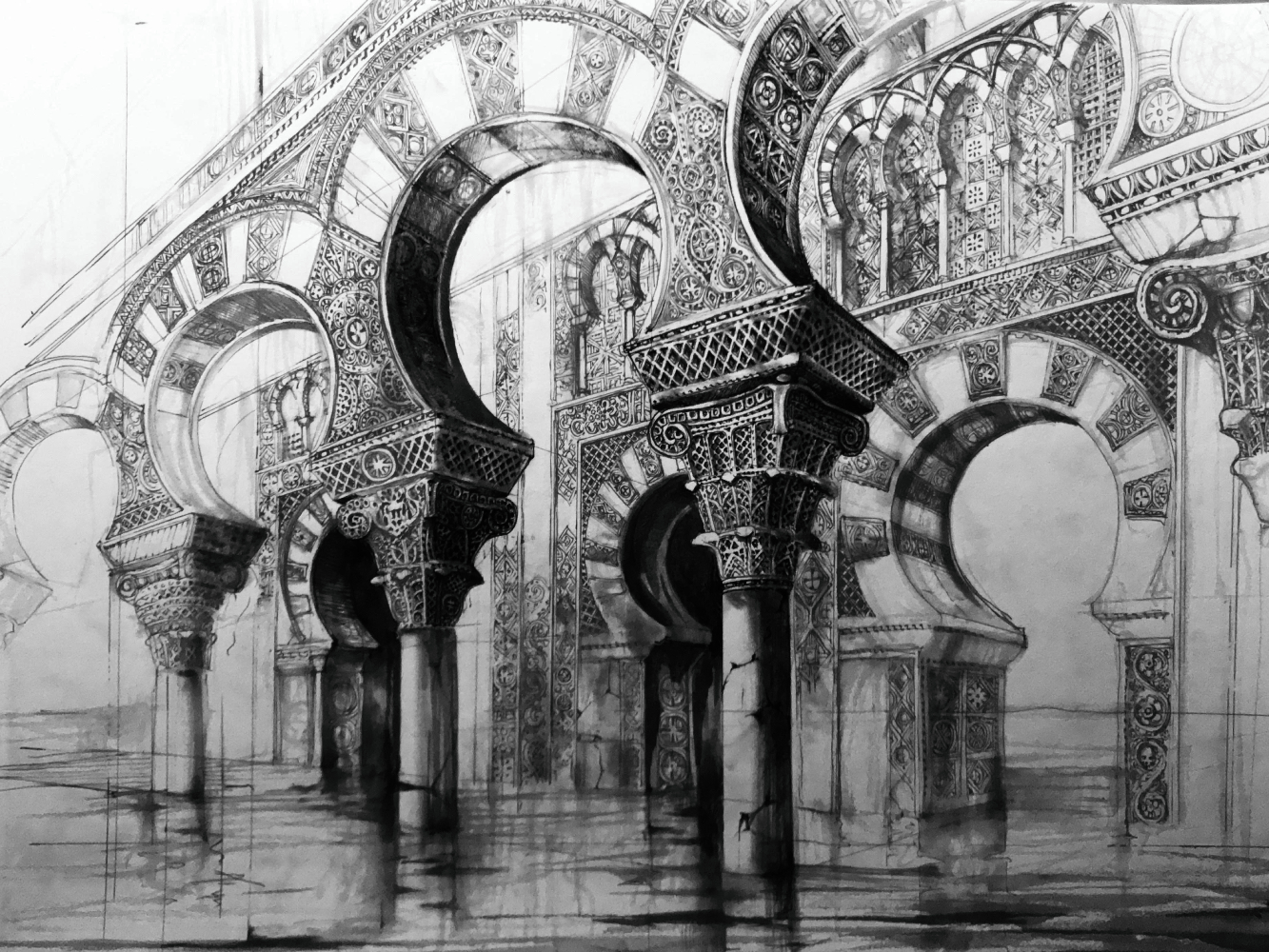
Fernando del Ama Gonzalo.
Fernando del Ama Gonzalo was born in Madrid, Spain. He earned his PhD in Architecture in 2005. Since then, he has combined video game design with his position as a professor at the School of Architecture of Madrid, at Alfaisal University in Riyadh, Saudi Arabia, and at the American University in Ras Al Khaimah, United Arab Emirates. He currently resides in New England, where he works as a professor of computer-aided drawing at Keene State College.


His work comes from a tradition, which emanates from visionary architects and which, under the guise of a presumed fidelity to reality, is very dreamlike. Fernando’s drawings display the contrast between lights and shadows in a battle in fantastic architecture.

Ink and Graphite work.
The architecture is the scene of a dreadful daily life that runs indifferently to the imposing presence of buildings described in detail, with a masterful command of perspective and volumes and pictorial effects that achieve an intense environmental sensation.

The color drawings fit well with the curious personality of their author and with another professional interest that led him to work as a videogame designer at the beginning of his career.

The virtuosity of the details of his drawings, the shafts of the columns, the magnificent entablatures, and the very notable Corinthian or composite capitals are part of the enjoyment of contemplating the spaces.

The intricacies of the ink drawings are striking, and they invite the viewer to look at them repeatedly. The unique themes and motifs ask viewers to think about a deeper narrative.
Observational drawings.
This approach is based on the use of drawing as thought. It goes beyond the representation of existing places by focusing on specific details. When drawing from life, it is essential to observe light and shadow, as they are critical factors in the realistic representation of subjects.

Cordoba, Spain
Located in the heart of Andalusia, Cordoba embodies the legacy of different cultures and civilizations over the centuries. Each conqueror, from the Romans to the Muslims, left their mark on this city.
Perugia, Mantova, Venice
Perugia is my favorite town in Italy. I have spent my time tracing Renaissance workshop practices primarily in Perugia and greater Umbria.

Tuscany and Rome, Italy
The Grand Tour used to be the best way to complete an architect’s education. After leaving school or university I recommend you head to Italy to visit the great towns and cities of the Renaissance, along with the remains of ancient Roman and Greek civilization.


